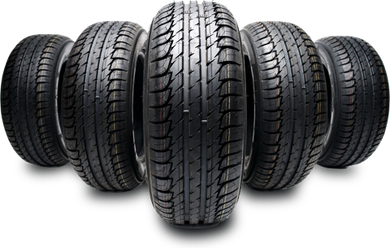Tire Service: The Influence of Climate Condition
When it pertains to ensuring optimum performance and safety and security when traveling, recognizing the impact of climate condition on tire service is critical. From scorching heat to icy roadways, each weather condition component can significantly influence tire functionality and total driving experience. By diving into the results of varying weather on tires, drivers can gain beneficial understandings that may boost their vehicle's efficiency and long life. In this discussion, we will certainly discover the detailed connection between climate condition and tire solution, shedding light on the importance of weather-specific tire upkeep methods and considerations.
Warmth and Tire Performance
When revealed to high temperature levels, tires experience changes in performance that can considerably impact vehicle security and handling. The heat produced from prolonged driving or heat problems creates the tire rubber to soften, causing lowered tread life and raised wear. As the rubber becomes softer, the tire's hold when driving reduces, affecting braking distances and general grip. In severe situations, too much heat can even create tire blowouts, posing an extreme safety danger to the automobile and its occupants.
In addition, high temperatures can speed up the process of tire aging, creating the rubber to deteriorate extra promptly. To minimize the impacts of warm on tire performance, drivers need to frequently check their tire stress, turn tires to make sure even wear, and check for any type of indicators of damage.
Winter Impacts
Cold weather conditions can have a significant influence on tire efficiency and security. As temperature levels drop, tire rubber can harden, leading to decreased traction on icy or snow-covered roads. In cool climate, tires might also lose atmospheric pressure much more rapidly, which can influence managing and fuel effectiveness. Additionally, cold temperatures can cause tire sidewalls to tense, enhancing the threat of damage from pits or other road hazards.
To minimize the effects of winter on tires, it is critical to regularly examine tire pressure and inflate them to the maker's suggested degrees. Using winter or all-season tires developed for chilly weather problems can additionally enhance grip and hold on icy or snowy roads - morris tire and alignment. Proper tire upkeep, including regular examinations for wear and damage, comes to be a lot more vital throughout cooler months to ensure optimum efficiency and security
Rainy Conditions Influence
Tires with damaged footsteps are more vulnerable to hydroplaning, where a layer of water builds up between the tire and the road surface area, leading to loss of traction. To fight this, motorists should consistently evaluate their tires for appropriate tread depth and consider investing in tires specifically made for wet conditions.

Snow and Tire Security
When driving in snowy problems, having the best tires can make a considerable difference in safety and efficiency. Winter season tires are designed with special rubber substances and walk patterns to provide far better grip on snow and ice compared to all-season tires.
In addition to making use of wintertime tires, it is essential to ensure they are correctly inflated. Winter can trigger tire stress to drop, affecting traction and handling (mopar tire service specials). Routinely inspecting and preserving the right tire stress is essential for optimal efficiency in snowy problems

Weather-Related Tire Maintenance
When confronted with various weather, correct tire upkeep ends up being a critical element of lorry security and efficiency. imp source Weather-related tire upkeep incorporates a range of methods focused on guaranteeing ideal tire feature and durability in various weather scenarios. One crucial facet of weather-related tire maintenance is tire stress regulation. Fluctuating temperature levels can trigger tire stress to differ, influencing traction and gas performance. Frequently adjusting and examining tire pressure according to producer referrals is vital for safe driving in transforming weather problems. Additionally, tire tread deepness plays a considerable function in managing various climate components. Tires with ample step depth provide far better hold on damp or icy roadways, minimizing the threat of hydroplaning or skidding. Examining tire step regularly and replacing tires when walk wear reaches a specific deepness is important for maintaining traction and security in unfavorable climate. By focusing on weather-related tire upkeep, motorists can boost safety and security, boost lorry efficiency, and prolong the lifespan of their tires.
Conclusion
Finally, weather have a significant influence on tire efficiency and security. From heat impacting tire stress and use to winter decreasing traction, it is necessary to consider the weather when keeping and using tires. Wet problems can reduce hold and bring about hydroplaning, while snow can increase the risk of this contact form accidents if tires are not appropriately furnished. Weather-related tire maintenance is important in making certain optimal performance and security when traveling.
In this conversation, we will discover the complex connection in between weather condition problems and tire solution, losing light on the importance of weather-specific tire upkeep methods and factors to consider.
